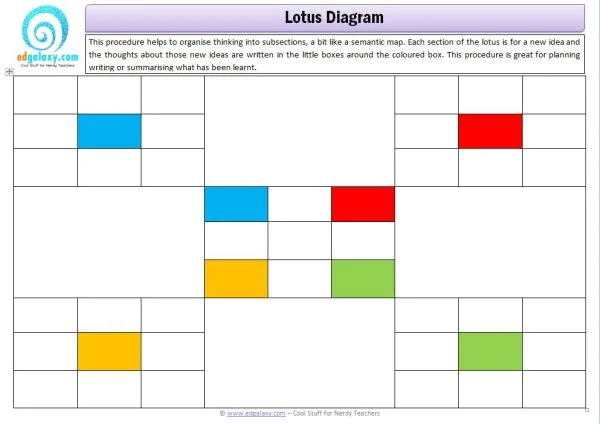Lotus Chart - Thinking Tool
/This procedure helps to organise thinking into subsections, a bit like a semantic map. Each section of the lotus is for a new idea and the thoughts about those new ideas are written in the little boxes around the coloured box. This procedure is great for planning writing or summarising what has been learnt.















